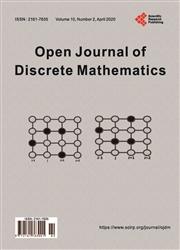Toric Heaps, Cyclic Reducibility, and Conjugacy in Coxeter Groups
引用次数: 0
Abstract
In 1986, G.X. Viennot introduced the theory of heaps of pieces as a visualization of Cartier and Foata’s “partially commutative monoids”. These are essentially labeled posets satisfying a few additional properties, and one natural setting where they arise is as models of reduced words in Coxeter groups. In this paper, we introduce a cyclic version of a heap, which loosely speaking, can be thought of as taking a heap and wrapping it into a cylinder. We call this object a toric heap, because we formalize it as a labeled toric poset, which is a cyclic version of an ordinary poset. Defining the category of toric heaps leads to the notion of certain morphisms such as toric extensions. We study toric heaps in Coxeter theory, because a cyclic shift of a reduced word is simply a conjugate by an initial or terminal generator. As such, we formalize and study a framework that we call cyclic reducibility in Coxeter theory, which is closely related to conjugacy. We introduce what it means for elements to be torically reduced, which is a stronger condition than simply being cyclically reduced. Along the way, we encounter a new class of elements that we call torically fully commutative (TFC), which are those that have a unique cyclic commutativity class, and comprise a strictly bigger class than the cyclically fully commutative (CFC) elements. We prove several cyclic analogues of results on fully commutative (FC) elements due to Stembridge. We conclude with how this framework fits into recent work in Coxeter groups, and we correct a minor flaw in a few recently published theorems.Coxeter群中的Toric堆、循环可还原性和共轭性
1986年,G.X.Viennot引入了堆碎片理论,将其作为Cartier和Foata的“部分交换半群”的可视化。这些本质上是满足一些附加性质的标记偏序集,它们出现的一个自然环境是作为Coxeter群中的简化词的模型。在本文中,我们介绍了堆的循环版本,粗略地说,它可以被认为是取一个堆并将其包装成圆柱体。我们称这个对象为复曲面堆,因为我们将其形式化为标记的复曲面偏序集,它是普通偏序集的循环版本。定义复曲面堆的范畴导致了某些态射的概念,例如复曲面扩展。我们在Coxeter理论中研究复曲面堆,因为缩减字的循环移位只是初始或终端生成器的共轭。因此,我们在Coxeter理论中形式化并研究了一个我们称之为循环可约性的框架,它与共轭性密切相关。我们介绍了元素被复还原的含义,这是一个比简单地被循环还原更强的条件。在这一过程中,我们遇到了一类新的元素,我们称之为复循环完全交换(TFC),这些元素具有唯一的循环交换性类,并且包含比循环完全交换元素严格更大的类。我们证明了由于Stembridge在完全可交换(FC)元素上结果的几个循环类似物。最后,我们总结了这个框架如何适应Coxeter群中最近的工作,并纠正了最近发表的几个定理中的一个小缺陷。
本文章由计算机程序翻译,如有差异,请以英文原文为准。
求助全文
约1分钟内获得全文
求助全文

 求助内容:
求助内容: 应助结果提醒方式:
应助结果提醒方式:


